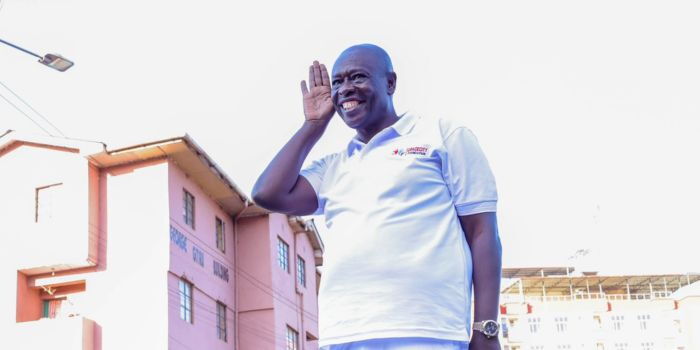Imagine a future where cancer patients spend less time in the hospital and more time living their lives. Is this just a dream? Emerging research suggests it’s becoming a tangible reality, but onyl if we embrace a new era of proactive, personalized care.
The American Society of Clinical oncology (ASCO) 2025 Annual Meeting highlighted the potential of symptom monitoring programs to reduce emergency department (ED) visits and inpatient stays for cancer patients. But the key takeaway? These programs are only effective when patients actively participate and healthcare providers respond swiftly.
The Critical Role of Timely Intervention
Lalan Wilfong, MD, from Thyme Care, emphasized a crucial point: it’s not just about collecting data; it’s about acting on it. “Nurses need to respond to any concerning symptoms within 2 hours or less in order to change the trajectory of ED visits and utilization,” he stated. This highlights the need for streamlined interaction and rapid response protocols.
Technology is playing an increasingly significant role in cancer care, but its effectiveness varies. Let’s delve into some specific examples presented at ASCO 2025.
BMT-CARE: An App That Eases Caregiver Burden
Jamie Jacobs, PhD, from Mass General Brigham, presented promising results for BMT-CARE, a digital application designed to support caregivers of patients undergoing hematopoietic stem cell transplantation (HSCT). This app delivers self-guided lessons on stress management and behavior change, addressing the high rates of anxiety and depression among caregivers.
The study showed that caregivers using the app reported higher quality of life scores and lower levels of depression and posttraumatic stress disorder compared to those receiving usual care (a single visit with a social worker). This suggests that accessible, self-paced digital interventions can considerably improve caregiver well-being.
ePROs: A Missed Possibility for Some Patients
Michael Hassett, MD, MPH, from Dana-Farber Cancer Institute, shared a less encouraging story. An electronic patient-reported outcomes (ePRO) system, designed to track patient symptoms and prevent hospital visits, failed to achieve significant results. Only 51% of eligible patients used the system, highlighting the challenges of patient engagement and system implementation.
This underscores the importance of addressing barriers to technology adoption, such as digital literacy, access to devices, and user-friendliness.A beautifully designed system is useless if patients don’t use it.
While technology has its place, sometimes the most effective interventions are surprisingly low-tech. Manali Patel, MD, from the Veterans Affairs Palo Alto Health Care system, demonstrated the power of lay health workers in improving care for older adults with cancer.
Phone Calls That Save Lives (and Money)
Despite initial skepticism, Patel’s team found that regular phone check-ins by lay health workers significantly reduced ED visits and hospital use among Medicare Advantage beneficiaries. These calls not only addressed medical concerns but also alleviated loneliness, a common issue among older patients.
The study also revealed substantial cost savings, with an average total cost of care that was $12,000 less per patient in the intervention group. This highlights the potential of community-based interventions to improve outcomes and reduce healthcare costs.
Ryan Nipp, MD, MPH, from the University of Oklahoma, presented findings on a Supportive Oncology Care at Home intervention. While the programme didn’t significantly reduce hospital admissions or ED visits, it did lead to fewer urgent clinic visits and improved patients’ ability to perform daily activities.
This suggests that home-based care can improve quality of life and reduce symptom burden, even if it doesn’t always prevent hospitalizations. More research is needed to identify the specific components of home care that are most effective and to tailor interventions to individual patient needs.
Robert M. Daly, MD, MBA, from Memorial Sloan-Kettering Cancer Center, summarized the key takeaways from the ASCO 2025 session, emphasizing the need to reduce geographic disparities, leverage new tools and data, and conduct robust evaluations of clinical programs.
The Triple Aim and the CMS Strategic Plan
Daly highlighted the importance of aligning cancer care initiatives with the Triple Aim (improving patient experience, improving population health, and reducing healthcare costs) and the CMS’ recent strategic plan. This includes focusing on local care delivery, proactive health interventions, and innovative collaborations.
The Future of Cancer Care: A Call to Action
The research presented at ASCO 2025 paints a complex picture of the future of cancer care. While technology offers tremendous potential, it’s not a silver bullet. Effective symptom monitoring programs require active patient engagement, timely provider response, and a focus on the human element.
by embracing a proactive, personalized, and patient-centric approach, we can move closer to a future where cancer patients receive the right care, at the right time, in the right place, leading to better outcomes and improved quality of life.
Cancer care, symptom monitoring, digital health, patient engagement, telehealth, caregiver support, personalized medicine, oncology, proactive care, cost reduction
Dr. Eleanor vance, thank you for joining us today to discuss the exciting advancements in cancer care highlighted at the recent ASCO 2025 meeting. The recurring theme seems to be a shift towards proactive, personalized, and patient-centric approaches. What are your overall impressions of this evolution?
Thank you for having me. I agree wholeheartedly. The shift is undeniable and incredibly promising. For too long, cancer care has been largely reactive. This new wave focuses on anticipating patient needs, tailoring treatments, and actively involving patients in their care journey. It’s about empowering them to live fuller lives even while undergoing treatment.
The article mentions “symptom monitoring programs.” While lauded for their potential, they only prove effective with active patient participation and swift healthcare provider response.What are the key challenges in ensuring these two critical components align?
That’s absolutely the crux of the matter. We need to bridge the gap between data collection and actionable insights.On the patient side, digital literacy, access to technology, and simply the motivation to consistently engage with these systems are vital.Healthcare systems need robust triage processes. As Dr. Wilfong emphasized, a two-hour response window to concerning symptoms is crucial. This requires dedicated teams, clear dialog protocols, and a culture that values proactive intervention. hospitals and clinics should consider dedicated phone lines or secure messaging platforms specifically for patients enrolled in symptom monitoring programs.
The ASCO meeting showcased various digital solutions, with BMT-CARE, an app for caregivers, showing significant positive impacts. What crucial role does technology play in cancer care beyond directly treating the patient?
The often-overlooked role of caregivers is finally gaining recognition. BMT-CARE is a fantastic example of how technology can support these individuals, who often experience immense stress and emotional burden. We also have to find the right balance by keeping in mind that technology is only part of the solutions.Technology can ease communication, provide education, and facilitate access to resources. It can also help streamline workflows, freeing up healthcare professionals to focus on more complex aspects of patient care. We also need technology to bridge with the more customary interventions. As an example, lay health workers have proven as effective as traditional healthcare workers in delivering and following through on treatments.
On the flip side, the article highlighted an ePRO system that yielded less-than-ideal results due to low patient engagement. What lessons can be learned from such experiences?
This is a vital cautionary tale. A system, no matter how well-designed, is useless if patients don’t use it.We need to prioritize user-friendliness, address accessibility barriers, and provide adequate training and support.It’s crucial to involve patients in the design process to ensure the technology meets their needs and preferences. Consider offering in-person tutorials, simplified instructions, and ongoing technical assistance. Think about diverse populations with varying levels of tech savvy. The key is to make engagement as easy and rewarding as possible.
Interestingly, the article points to the success of lay health workers in improving outcomes and reducing costs, even with simple phone calls. What does this say about the effectiveness of high-tech versus low-tech interventions in cancer care?
It highlights the enduring power of the human connection. Technology is a powerful tool, but it shouldn’t replace empathy and personal interaction. The success of lay health workers underscores the importance of addressing the social and emotional needs of patients, particularly older adults who may be experiencing loneliness and isolation. These interventions are frequently enough incredibly cost-effective and can substantially improve quality of life. Home-based care is also a grate consideration to combine a personal touch with the convenience of staying at home.
The article mentions the “Triple Aim” and the CMS strategic plan in the context of future directions in cancer care. How can healthcare providers align their initiatives with these broader goals?
Aligning with the Triple Aim and CMS strategic plan requires a holistic approach. It’s about focusing on local care delivery, implementing proactive interventions, and fostering innovative collaborations. We need to design programs that not only improve patient outcomes but also enhance the patient experience and reduce healthcare costs. This means investing in preventive care, addressing social determinants of health, and leveraging data to identify areas for enhancement. Think about integrating cancer care services into community settings, partnering with local organizations, and using technology to connect patients with the resources they need.
What advice would you give to cancer patients and their families based on these insights from ASCO 2025?
Be your own advocate. Actively participate in your care, ask questions, and don’t hesitate to express your concerns. Embrace technology as a tool to help you manage your symptoms and stay connected with your healthcare team, but don’t rely on it fully. Seek support from caregivers, family members, and community organizations. Remember that you are not alone, and there are many resources available to help you navigate this challenging journey. Proactivity and staying involved is the key to success.
Dr. Vance, thank you for sharing your expertise and providing such valuable insights.
My pleasure. Thank you for highlighting these vital advancements in cancer care.








